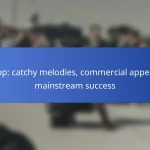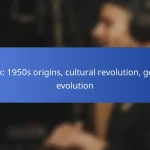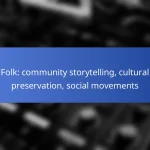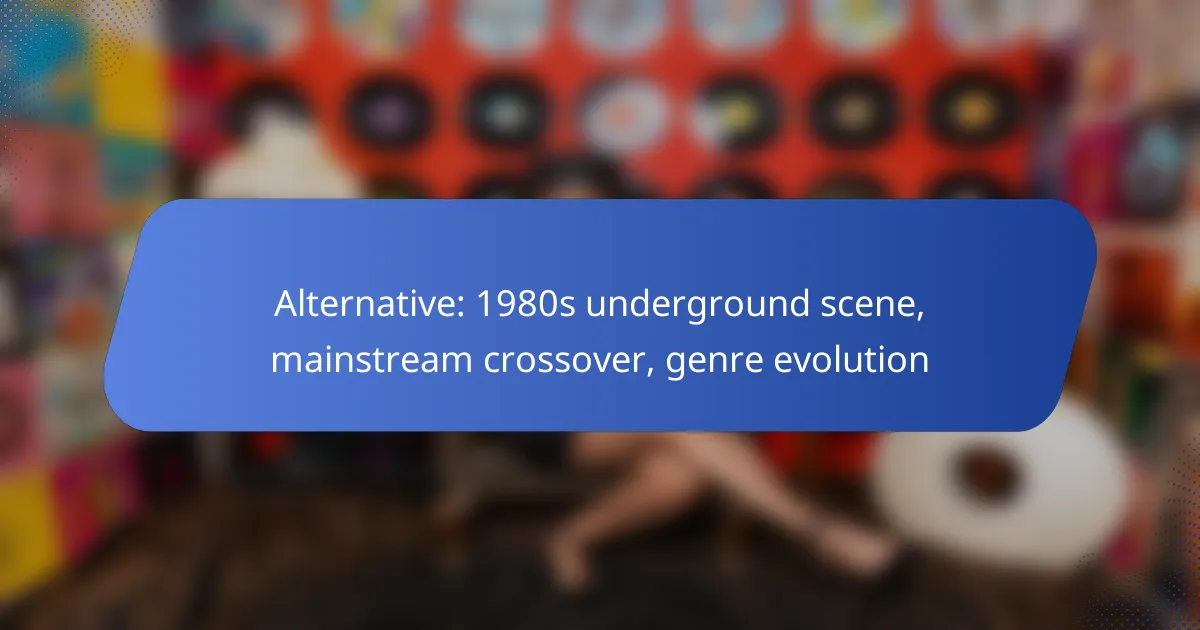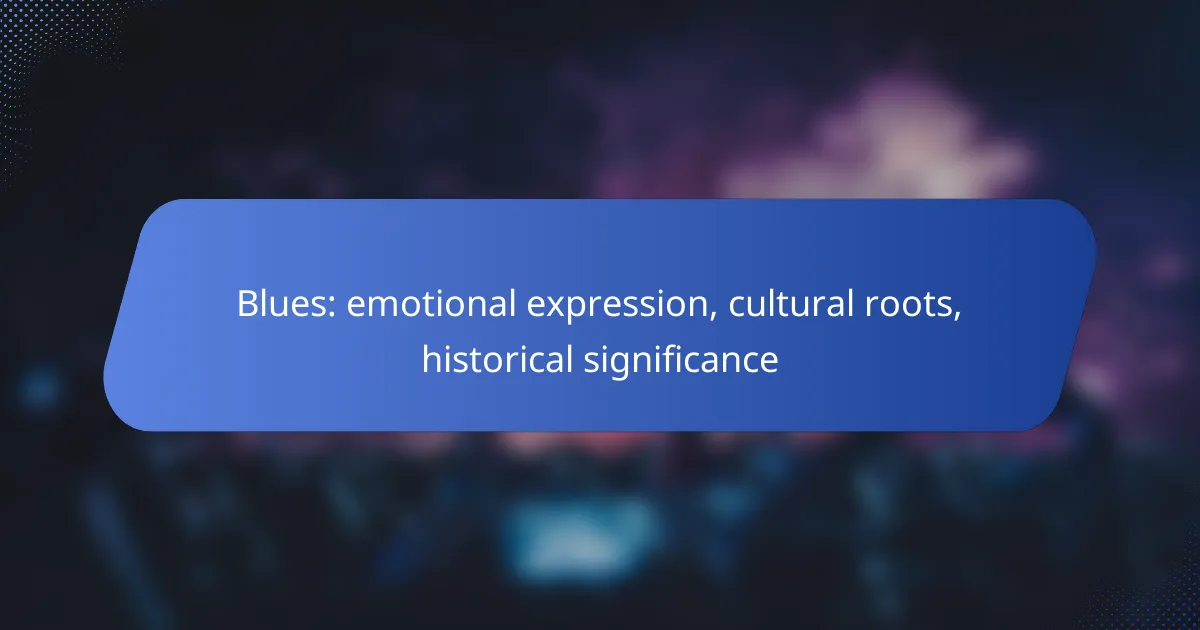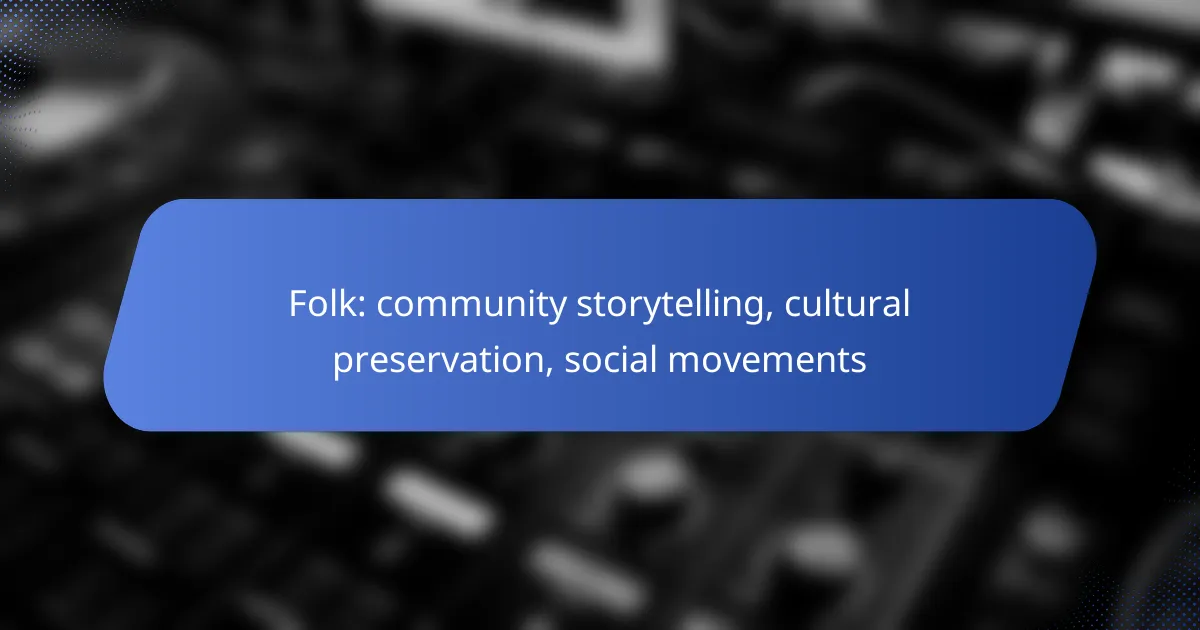The 1980s underground scene played a pivotal role in reshaping mainstream music, introducing innovative sounds and styles that defied traditional boundaries. This era saw the rise of alternative rock and other influential genres like punk, post-punk, new wave, and goth rock, all of which contributed to a rich tapestry of musical evolution. As technology advanced and music video culture flourished, these underground movements gained significant mainstream traction, resulting in a vibrant and diverse musical landscape.
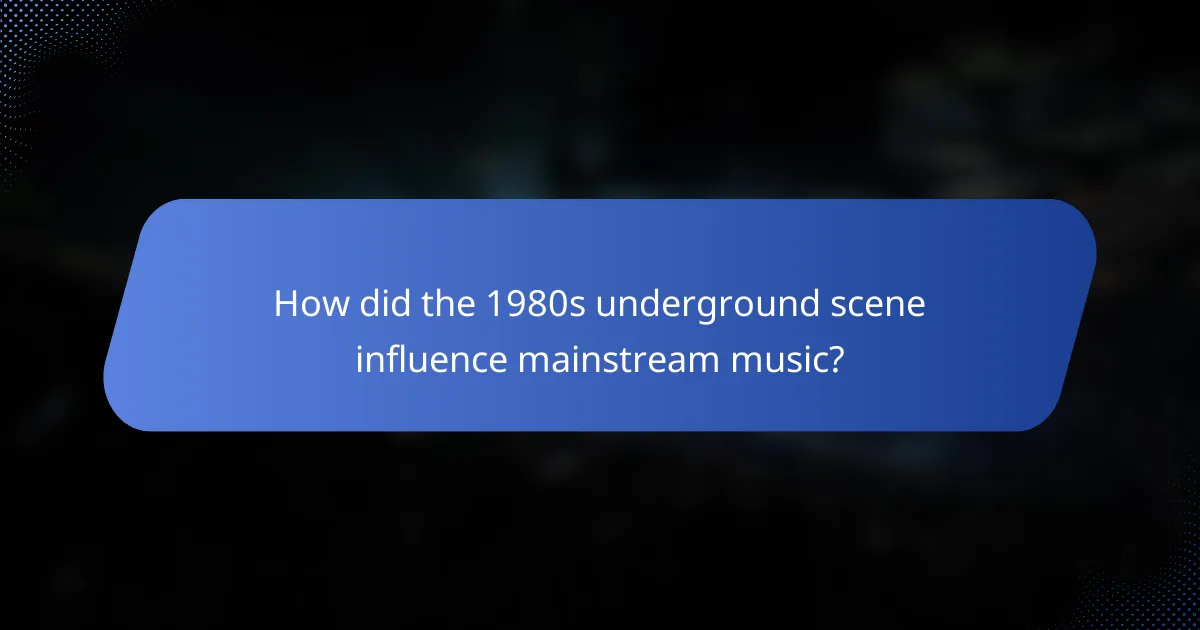
How did the 1980s underground scene influence mainstream music?
The 1980s underground scene significantly shaped mainstream music by introducing new sounds and styles that challenged traditional norms. Genres like alternative rock emerged from this scene, leading to a crossover that transformed popular music and culture.
Emergence of alternative rock
Alternative rock began to gain traction in the 1980s as bands sought to differentiate themselves from the dominant pop and rock sounds of the time. This genre was characterized by its diverse influences, including punk, post-punk, and new wave, resulting in a sound that was both innovative and accessible.
As alternative rock bands gained popularity, they often incorporated unconventional song structures and lyrical themes, appealing to a youth audience looking for authenticity. This shift laid the groundwork for the genre’s eventual mainstream acceptance in the 1990s.
Impact on pop culture
The influence of the 1980s underground scene extended beyond music, permeating fashion, art, and youth culture. Styles associated with alternative rock, such as thrift store fashion and DIY aesthetics, became emblematic of a countercultural movement that resonated with many young people.
Additionally, music videos on platforms like MTV showcased alternative bands, further integrating them into the fabric of mainstream pop culture. This visibility helped to normalize alternative styles and attitudes, making them more widely accepted.
Key artists and bands
Several key artists and bands emerged from the 1980s underground scene, including R.E.M., The Smiths, and Sonic Youth. These groups not only defined the sound of alternative rock but also influenced countless musicians in subsequent decades.
R.E.M., for instance, became one of the first alternative bands to achieve significant commercial success, paving the way for others. Their introspective lyrics and jangly guitar sound resonated with a wide audience, demonstrating the potential for underground music to thrive in the mainstream.
Record label involvement
Record labels played a crucial role in bridging the gap between the underground scene and mainstream music. Independent labels like SST and 4AD were instrumental in promoting alternative bands, providing them with the resources needed to reach broader audiences.
As alternative rock’s popularity surged, major labels began to sign these artists, often seeking to capitalize on their unique sounds. This shift led to a mix of creative freedom and commercial pressure, influencing the way alternative music was produced and marketed.

What were the major genres in the 1980s underground scene?
The 1980s underground scene was characterized by several influential genres that shaped music and culture. Key genres included punk rock, post-punk, new wave, and goth rock, each contributing to the evolution of sound and style during this transformative decade.
Punk rock
Punk rock emerged in the late 1970s but gained significant traction in the 1980s, emphasizing raw energy and anti-establishment themes. Bands like The Dead Kennedys and Bad Religion exemplified the genre’s DIY ethos and political messages.
Musically, punk rock is characterized by fast tempos, simple chord progressions, and often aggressive lyrics. The genre encouraged a rebellious spirit, leading to the creation of independent record labels and underground venues.
Post-punk
Post-punk developed as a response to punk rock, incorporating a broader range of influences, including electronic music and art rock. Bands like Joy Division and Talking Heads explored darker themes and innovative sounds, pushing the boundaries of traditional rock.
This genre often featured complex song structures, experimental instrumentation, and a focus on atmosphere. Post-punk artists frequently sought to challenge the norms established by their punk predecessors, leading to a diverse array of sounds and styles.
New wave
New wave emerged from the punk rock scene, blending pop sensibilities with punk’s rebellious attitude. Characterized by synthesizers and catchy melodies, bands like Duran Duran and Blondie brought a more polished sound to the forefront of the music scene.
This genre often embraced fashion and visual aesthetics, making it a significant part of the 1980s pop culture landscape. New wave’s mainstream success helped bridge the gap between underground music and commercial viability.
Goth rock
Goth rock evolved from post-punk, characterized by dark, atmospheric sounds and introspective lyrics. Bands like Bauhaus and Siouxsie and the Banshees created a distinct aesthetic that combined music with gothic literature and horror themes.
The genre’s influence extended beyond music, impacting fashion and subculture, with its followers often adopting a distinctive style that included dark clothing and dramatic makeup. Goth rock’s legacy continues to resonate in various music genres today.
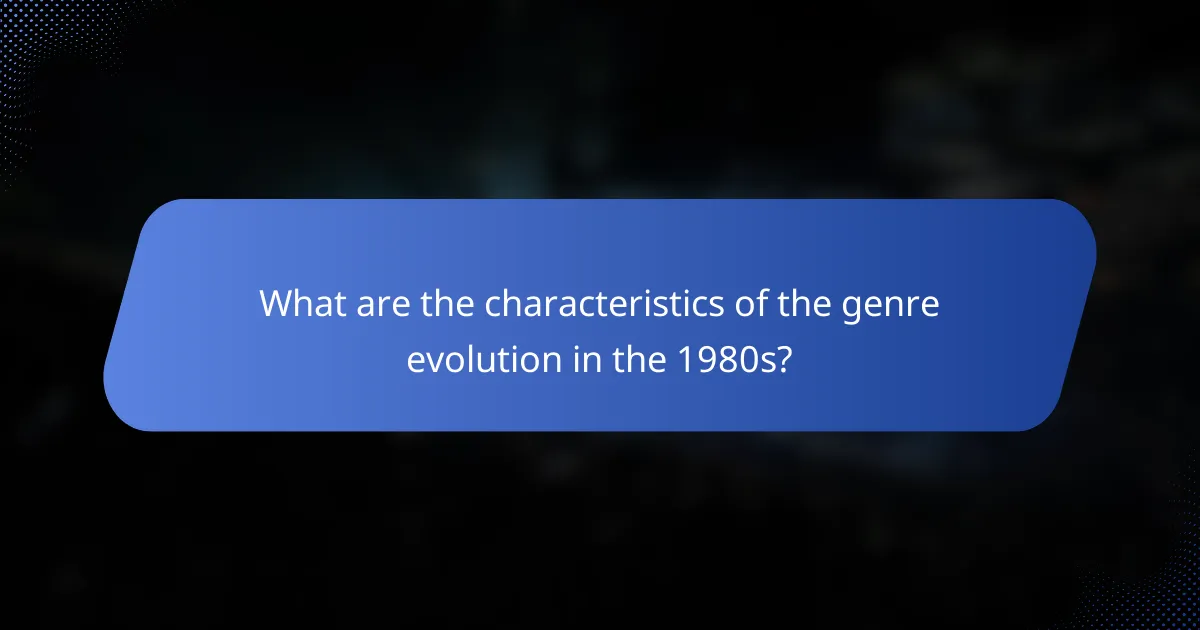
What are the characteristics of the genre evolution in the 1980s?
The genre evolution in the 1980s was marked by a significant blending of musical styles, driven by technological advancements and the rise of music video culture. This period saw underground genres gaining mainstream attention, leading to a dynamic and diverse musical landscape.
Blending of styles
The 1980s witnessed a remarkable fusion of various musical genres, including punk, new wave, funk, and electronic music. Artists began to experiment with different sounds, creating hybrid genres like synth-pop and rap-rock, which appealed to a broader audience.
This blending often resulted in innovative sounds that challenged traditional genre boundaries. For example, bands like The Clash incorporated reggae influences into punk, while artists like Madonna mixed pop with dance and rock elements, paving the way for future cross-genre collaborations.
Technological advancements
Advancements in music technology played a crucial role in the genre evolution of the 1980s. The introduction of synthesizers, drum machines, and digital recording techniques allowed artists to create new sounds and experiment with production methods. This technology made it easier to produce music that was more polished and radio-friendly.
Moreover, the use of sampling became prevalent, enabling musicians to incorporate snippets of existing songs into their work. This practice not only expanded creative possibilities but also laid the groundwork for the rise of hip-hop and electronic dance music.
Influence of MTV
MTV’s launch in 1981 revolutionized how music was consumed and promoted, significantly impacting genre evolution. The network’s focus on music videos allowed artists to visually express their music, leading to a new emphasis on image and performance.
This visual medium helped propel many underground artists into the mainstream, as their videos reached a wide audience. Iconic acts like Duran Duran and Michael Jackson became household names, demonstrating the power of visual storytelling in music and influencing future artists to prioritize their image alongside their sound.
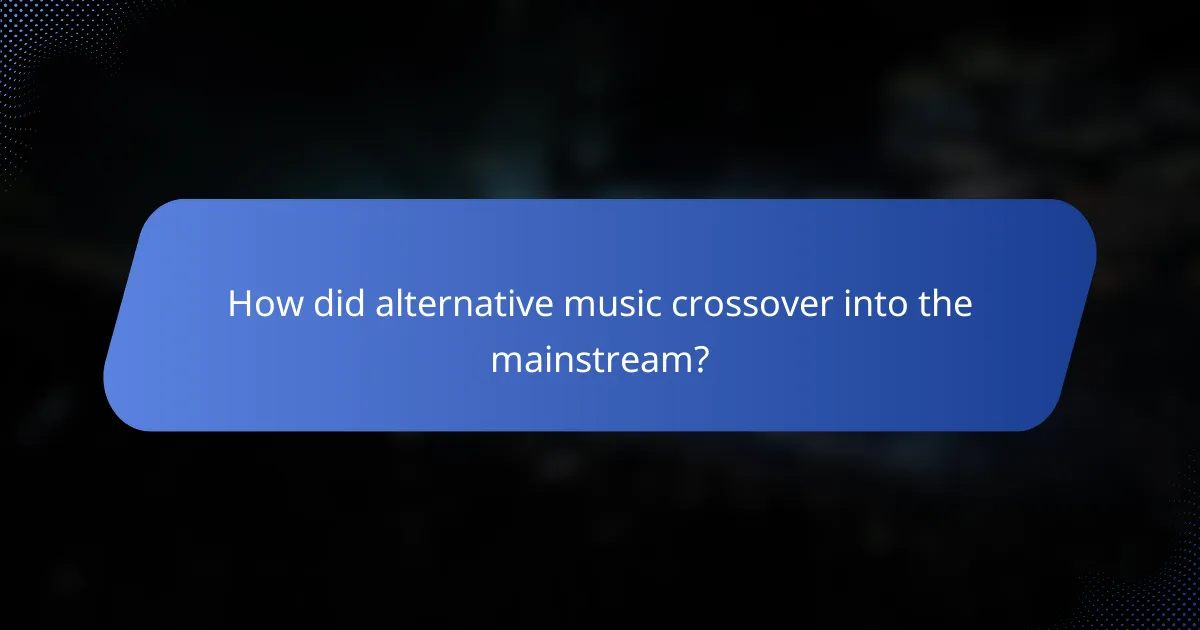
How did alternative music crossover into the mainstream?
Alternative music crossed into the mainstream primarily through its unique sound and cultural relevance, appealing to a broader audience in the late 1980s and early 1990s. Key factors included chart success, collaborations with popular artists, and high-profile festival appearances that showcased alternative acts to larger crowds.
Chart-topping hits
Chart-topping hits played a significant role in bringing alternative music into the mainstream. Bands like Nirvana and R.E.M. achieved commercial success with songs that resonated with a wide audience, often topping the Billboard charts. This visibility helped to legitimize the genre and attract new fans.
Notable tracks such as “Smells Like Teen Spirit” and “Losing My Religion” not only dominated radio airplay but also influenced the music landscape, encouraging record labels to invest in alternative acts. The success of these singles demonstrated that alternative music could achieve mass appeal without compromising its artistic integrity.
Collaborations with mainstream artists
Collaborations between alternative musicians and mainstream artists significantly contributed to the crossover phenomenon. When alternative bands teamed up with pop or rock icons, it created a bridge that introduced their music to a broader audience. For example, the collaboration between R.E.M. and artists like Patti Smith helped to merge different musical styles and fan bases.
These partnerships often resulted in hit singles that showcased the alternative sound while still appealing to mainstream listeners. Such collaborations not only elevated the profiles of alternative artists but also encouraged mainstream acts to explore more diverse sounds.
Festival appearances
Festival appearances provided alternative bands with vital exposure to larger audiences, facilitating their crossover into mainstream culture. Events like Lollapalooza and Coachella featured a mix of genres, allowing alternative artists to perform alongside well-known acts, which helped to attract diverse crowds.
These festivals became platforms for alternative music, showcasing its energy and appeal. The visibility gained from performing at such high-profile events often led to increased album sales and radio play, further solidifying the genre’s place in mainstream music.
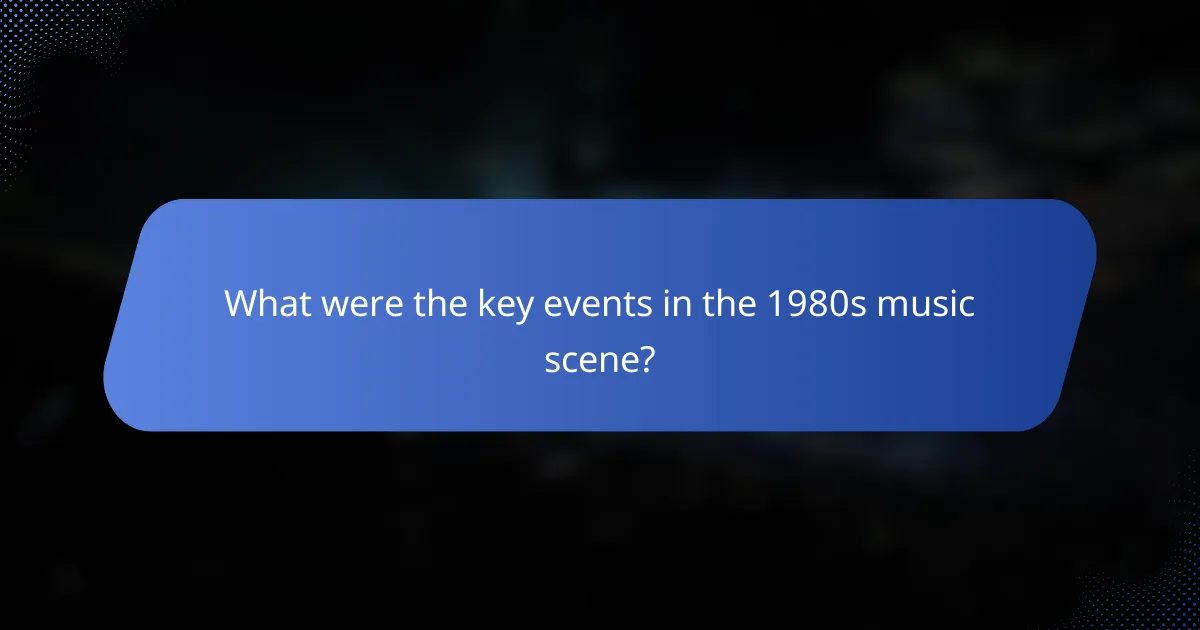
What were the key events in the 1980s music scene?
The 1980s music scene was marked by significant events that shaped the evolution of genres and the crossover of underground acts into the mainstream. Key happenings included monumental concerts, iconic venues, and the formation of influential collectives that propelled various music styles into the public eye.
Live Aid concert
The Live Aid concert, held in July 1985, was a pivotal event that showcased major artists while raising funds for famine relief in Ethiopia. This dual-venue concert, taking place in London and Philadelphia, featured performances from legends like Queen, U2, and David Bowie, drawing an audience of millions worldwide.
Live Aid not only highlighted the power of music for social change but also marked a significant moment in the crossover of rock and pop into mainstream culture. The event’s success demonstrated how music could unite people for a common cause, influencing future charity concerts.
CBGB club performances
CBGB, located in New York City, was the birthplace of the punk rock movement and a crucial venue for underground music in the 1980s. Artists such as The Ramones, Blondie, and Talking Heads performed there, helping to shape the sound and style of the era.
The club became a cultural landmark, fostering a community of musicians who pushed the boundaries of music and art. Its intimate setting allowed for raw, authentic performances that resonated with audiences and contributed to the genre’s evolution.
Formation of influential collectives
The 1980s saw the rise of influential collectives that played a significant role in the music scene. Groups like the Beastie Boys and Public Enemy not only created groundbreaking music but also addressed social and political issues through their lyrics and performances.
These collectives often collaborated across genres, blending hip-hop, punk, and rock, which helped to redefine musical boundaries. Their impact extended beyond music, influencing fashion, art, and youth culture, and paving the way for future artists to explore diverse sounds and themes.
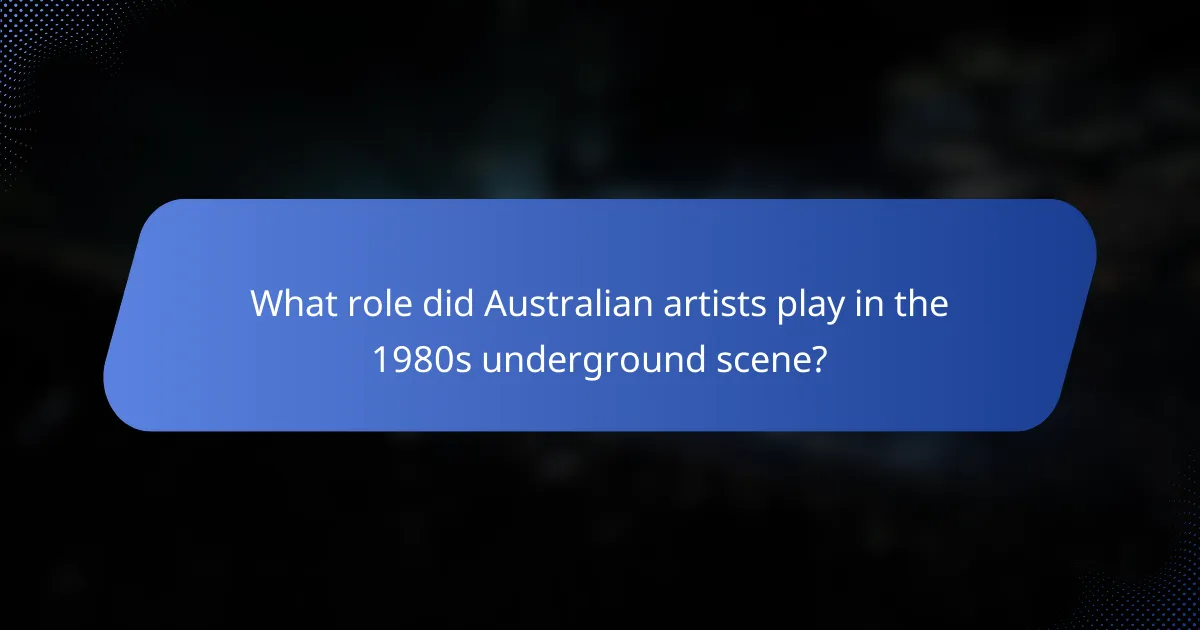
What role did Australian artists play in the 1980s underground scene?
Australian artists were pivotal in shaping the 1980s underground scene, contributing unique sounds and styles that influenced both local and international music. They often blended punk, post-punk, and new wave elements, creating a distinct identity that resonated with audiences seeking alternatives to mainstream culture.
Influence on Global Trends
Australian underground artists played a significant role in global music trends during the 1980s. Bands like The Birthday Party and The Saints introduced raw energy and experimental sounds that inspired international acts. Their music often challenged conventional norms, paving the way for later genres such as grunge and alternative rock.
Local Scenes and Venues
The underground scene in Australia thrived in various cities, particularly Melbourne and Sydney, where small venues became hotspots for emerging talent. Places like The Metro and The Seaview Hotel hosted countless gigs, fostering a sense of community among artists and fans. These venues were crucial for the development of local music culture, allowing artists to experiment and connect with audiences.
Key Artists and Contributions
Several Australian artists made notable contributions to the underground scene in the 1980s. Bands such as Midnight Oil and Hunters & Collectors not only gained popularity domestically but also achieved international recognition. Their music often addressed social and political issues, resonating with a generation seeking change.
Challenges Faced
Despite their impact, Australian underground artists faced numerous challenges, including limited funding and exposure. Many struggled to secure record deals, forcing them to rely on independent labels and self-promotion. This struggle often led to innovative approaches in music production and distribution, helping to define the underground ethos.
